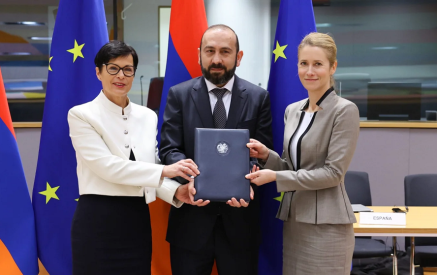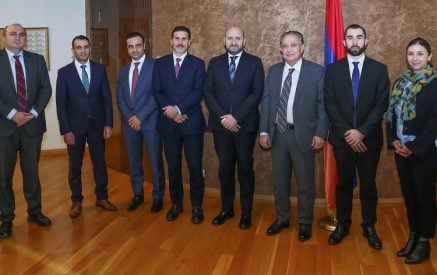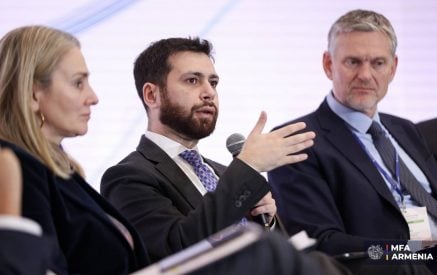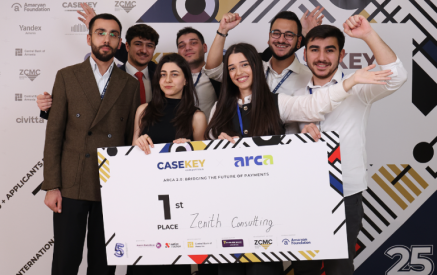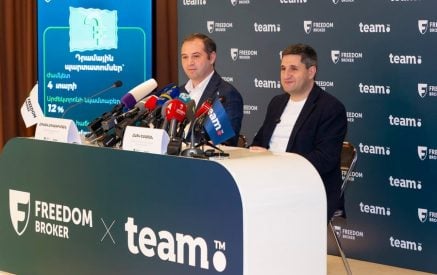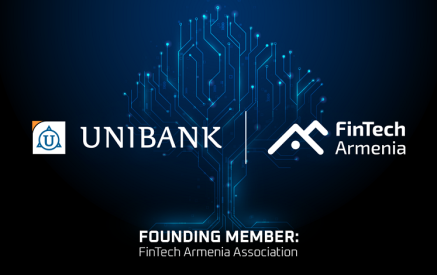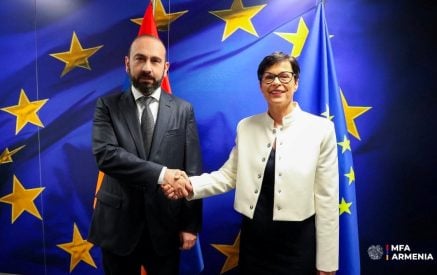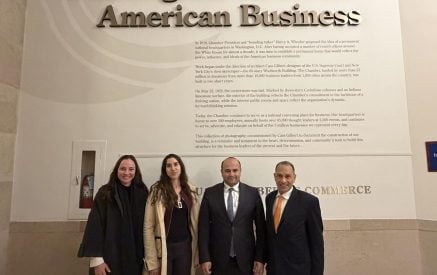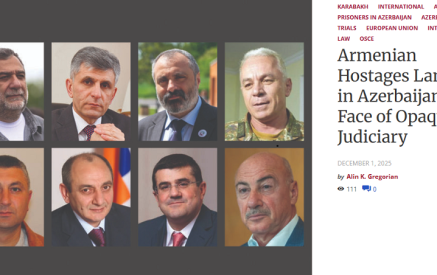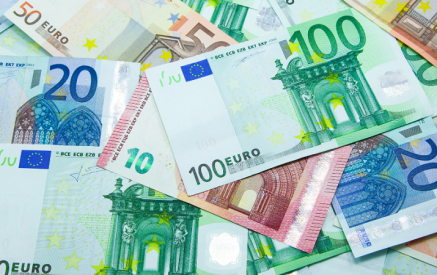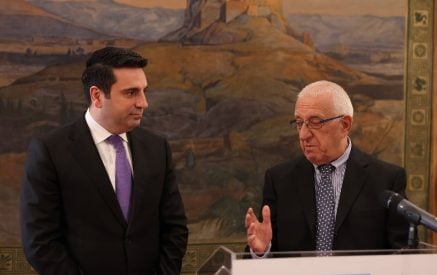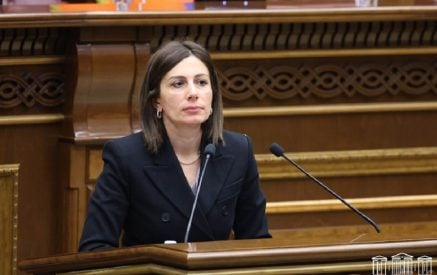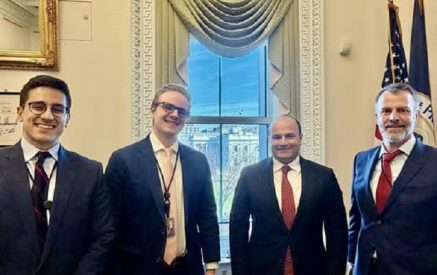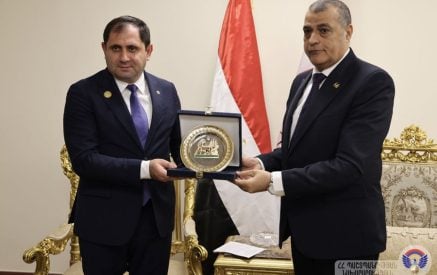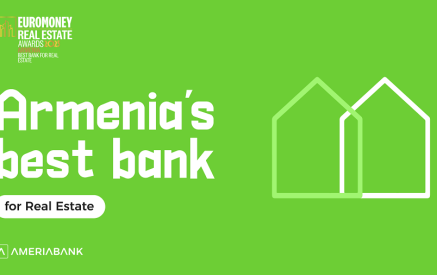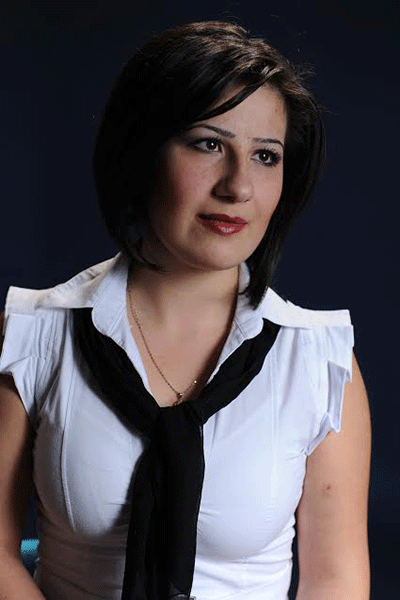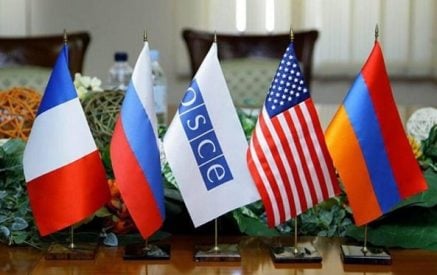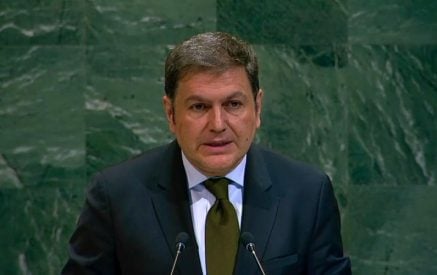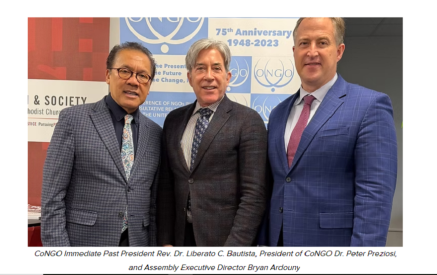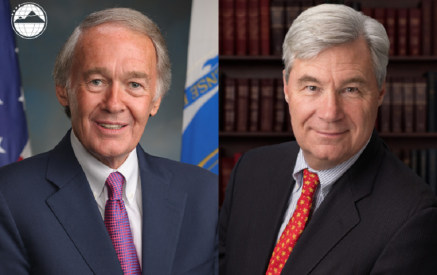Ani Yeghiazaryan
AIISA associate fellow
PhD researcher at the Friedrich Schiller University in Jena, Germany
This paper comprehensively examines the functioning of the European Union (EU) Neighbourhood Policy and, particularly, of Eastern Partnership (EaP) showing the ensuing political and economic consequences on the foreign policy of both the EU and EaP member states. Starting the analysis from ENP (2003) is of chronological importance and meaning, because EaP originates from ENP and is its eastern dimension.
EU’S NEIGHBOURHOOD POLICY (ENP)
The concept of “European Neighbourhood” crystallized in early 2002. ENP became more real in March 2003 ahead of May 2004, when 10 new countries have become EU members, which in history is the one-time largest expansion of the EU from the territorial and population’s perspective, and not that of GDP. It refers to Cyprus, Czech Republic, Estonia, Hungary, Latvia, Lithuania, Malta, Poland, Slovakia and Slovenia (it’s noteworthy, that most of them formerly were Eastern bloc participants). The ENP supports political and economic reforms in 16 neighbouring countries of Europe to promote peace, stability and economic prosperity in the whole region.
The strategic goal of the ENP is to strengthen and share with the neighbouring countries, the benefits of the European Union (EU) enlargement—prosperity, stability and security—to the Central and Eastern Europe. The ENP is a key part of the European Union’s foreign policy.
The ENP spreads on the EU’s direct neighbours by land and by sea: Algeria, Egypt, Libya, Tunisia, Israel, Jordan, Morocco, Palestine, Lebanon, Syria (10 countries by sea), Armenia, Belarus, Georgia, Moldova, Ukraine and Azerbaijan (6 countries by land). Although Russia is also an EU neighbour, their relations developed through a Strategic Partnership (May 2003).
EASTERN PARTNERSHIP PROGRAM (EAP)
EaP is the joint initiative of the EU and its partner countries in Eastern Europe and the South Caucasus that brings the EU’s eastern neighbours closer to the EU, representing the Eastern dimension of the ENP. It was designed on existing bilateral relations between the EU and its partner countries. Eastern Partnership supports and encourages reforms in 6 member countries: Armenia, Belarus, Georgia, Moldova, Ukraine and Azerbaijan.
EaP was officially launched in May 2009 at the EU Prague Summit, the joint declaration of which reads, “The participants of the Prague Summit agree that the EaP will be based on commitments to the principles of international law and to fundamental values, including democracy, the rule of law and the respect for human rights and fundamental freedoms, as well as to market economy, sustainable development and good governance. The EaP builds on and is complementary to existing bilateral contractual relations. It will be developed without prejudice to individual partner countries’ aspirations for their future relationship with the EU. It will be governed by the principles of differentiation and conditionality. [1]”
As A. Bayburdyan writes in his article “Development of Armenia-EU relations and cooperation tools,” European aspiration has always been up-to-date under European integration and this formulation is reflected in basic documents. During the establishment of the EU and European integration processes it was interpreted as an intention to become an EU member, but when ENP was launched, new shades have been given to the formulation of interpretation: more cautiously expressed as “seeking to Europe, with a claim of different degrees of integration into the EU.” The EU’s Finnish presidency (2006) has put into circulation the following provision: the ENP doesn’t guarantee the EU membership, but doesn’t close the door either, i.e. the possibility of membership is not excluded, completely leaving responsibility on the individual country[2].
As the document entitled “Eastern partnership: Communication from the European Commission to the European Parliament and the Council” enshrines, the EU has a vital interest in seeing stability, good governance and economic development at its Eastern borders,“At the same time, our partners in Eastern Europe and the Southern Caucasus all seek to intensify their relations with the EU. The Union’s policy towards them must be proactive and unequivocal: the EU will give strong support to these partners in their efforts to come closer to the EU, and will give all necessary assistance with the reforms this entails, through a specific Eastern dimension within the ENP[3].”
OFFICIAL AND NON-OFFICIAL SIGNIFICANT EaP SUMMITS
4 official summits have been launched since the establishment of EaP, which took place in Prague (May 7, 2009), Warsaw (September 29-30, 2011), Vilnius (November 28-29, 2013) and Riga (May 21-22, 2015). Participants came to the Prague Summit to bring their relationship to a new level, by establishing EaP and adopting a Joint Declaration. They agreed that EaP will be based on commitments to the principles of international law and to fundamental values, including democracy, the rule of law and the respect for human rights and fundamental freedoms, as well as market economy, sustainable development and good governance. EaP was to develop in parallel with the bilateral cooperation between the EU and third states[4].
It’s noteworthy, that EaP was adopted after the Russian-Georgian war (2008) to provide the development of European Neighbourhood Policy and EU’s even greater involvement in the post-Soviet space. In the same year a number of evaluations have been given by Russia on real goals of EaP’s formation.
In 2011 the participants of the Warsaw Summit acknowledged the European aspirations and the European choice of some partners, as well as their commitment to build deep and sustainable democracy. They highlighted the particular role for EaP to support those, seeking even closer relationship with the EU. It was also stressed that there is more trade and economic interaction between the EU and its Eastern European partners than before, and to consolidate this trend, the EU and most of its partners are engaged in negotiations on Association Agreements (AA) which will also lead to Deep and Comprehensive Free Trade Areas (DCFTA) as soon as the conditions are met. At the same time it was stated that they are involved in the process of visa regime liberalization[5].
As of 2011 the dialogue on visa-free regime was launched with Ukraine and Moldova. EU-Ukraine Visa Liberalization Dialogue was initiated on October 29, 2008, and Visa Liberalization Action Plan (VLAP) was presented to Ukraine on November 22, 2010. EU-Moldova Visa Liberalization Dialogue was launched on June 15, 2010 and VLAP was presented to Moldova in January 2011. It should be stated that Visa Facilitation Agreement and Readmission Agreement with Ukraine entered into force in June 2007 (and an amended version of the Visa Facilitation Agreement entered into force in July 2013).
The EU and Moldova signed a Mobility Partnership in June 2008 and the EU-Moldova Visa Facilitation Agreement and Readmission Agreement entered into force in October 2007 (an amended version of the Visa Facilitation Agreement with Moldova entered into force in July 2013) [6].
Visa-facilitation and readmission agreements are being implemented with Georgia and similar agreements will be sought with the Republic of Armenia, the Republic of Azerbaijan and the Republic of Belarus.
Thus, the leader countries of EaP are Ukraine and Moldova. It’s worth mentioning, that the largest country in Europe by territory and among EaP members—Ukraine, is the most important country both for Russia and the EU and is between them. Ukraine was the first country to initial the Association Agreement with the EU. It took place in 2012 during the presidency of the fourth president Viktor Yanukovich (he became the president in 2010). This is a rather crucial circumstance from the perspective of commenting on the well-known developments in Ukraine (when Yanukovich was accused for his pro-Russian posture). Coming to Moldova, it should be noted, that the country has always been observed as a country, geographically standing near Europe. Reflecting to other members, it should be pointed, that the 2008 August war was considerably linked to Georgia’s European aspirations. As manifestation of Russia’s determination, basically, it should have been a lesson for other EaP members. In case of Belarus it’s rather close to Russia and they have created Belarus-Russia Union state (the Contract on the creation of the Union State came into force on January 26, 2000). Throughout recent years Azerbaijan adopted a neutral position, constantly stating that it is against joining any alliance. The Republic of Armenia is a large area of Russian influence, military presence, which is a restraining factor in the way to Armenia’s European integration.
The third EaP summit was held in Vilnius on November 29-30, 2013, the participants of which reconfirmed their commitment to fully implement EaP principles. They reassessed the considerable progress made in the partnership since Warsaw Summit, bringing Eastern European partners closer to the EU. The participants stressed the crucial necessity to implement agreed commitments, in particular, on political, economic and social reforms[7]. Considerable results have been recorded at the Vilnius Summit. Georgia and Moldova initialed the Association Agreement, meanwhile Ukraine, which was to sign the Association Agreement, did not do it. There were several reasons for that, which are listed in detail in our Conclusion.
During the Vilnius Summit Azerbaijan and the EU signed an agreement on visa facilitation. Sides have initialed this agreement in July 2013 (it came into force on September 1, 2014 together with the Readmission Agreement). As for Armenia, after 3.5 years of negotiations on the Association Agreement with the EU, it didn’t initial the AA. This was largely related to RA President’s statement on September 3, 2013 when he declared about Armenia’s joining to the Customs Union.
Commenting on the Vilnius Summit from the EU’s and Russia’s points of view, one could notice, that at that moment there were two groups. The first three countries (Moldova, Ukraine, Georgia) initialed the AA, and the second three (Armenia, Belarus, Azerbaijan)—didn’t. In fact, Russia has disturbed two important actions—initialing of the AA by Armenia and signing the AA by Ukraine. It can be considered that the score was 2:2 linked to the point, that at the Vilnius Summit Moldova and Georgia initialed the AA, meanwhile Armenia didn’t, and Ukraine didn’t sign it either. However, it’s worth mentioning that this situation was typical to 2013 only, as after the well-known developments in Maidan—in 2014, Ukraine signed the AA (firstly, the political part, then the economic).
And finally, the last EaP summit was launched in Riga in 2015. The participants reconfirmed the high importance they attach to EaP as a specific dimension of the ENP. They reaffirmed their shared vision of this strategic and ambitious Partnership as one based on mutual interests and commitments, as well as supporting sustained reform processes in the EaP countries. Summit participants recommitted themselves to strengthen democracy, rule of law, human rights and fundamental freedoms, as well as principles and norms of international law, which have been at the heart of this Partnership since it has been launched as a common initiative of EU member states and their Eastern European partners. In the framework of the ENP and EaP, the Summit participants reaffirmed the sovereign right of each partner to choose freely the level of ambition and the goals to which it aspires in its relations with the EU. It was stressed that it’s up to the EU and its sovereign partners to decide on how they want to proceed in their relations. This, naturally, was a clear message to Russia, which showed by its behavior that it denies the right of EaP member countries to make sovereign decisions.
It was also stated that the EU remains committed in its support to the territorial integrity, independence and sovereignty of all its partners[8]. It’s also underlined that the Summit participants look forward to the next Summit to be held in late 2017 that will assess the results achieved and will outline the way forward in the Partnership.
Summing up the latest EaP summit, we can notice that during the Riga Summit serious changes haven’t been recorded and 6 post-Soviet countries of EaP had different relations and were in different levels of cooperation with the EU. Currently the EU shows a differentiated approach towards EaP member countries. It’s conditioned by the fact that the first group of EaP members (Ukraine, Moldova, Georgia) signed the AA including establishment of a Deep and Comprehensive Free Trade Area (DCFTA), meanwhile the second group (Armenia, Belarus, Azerbaijan) didn’t sign it. Here the score is 3:3. Despite this equal score, it can be considered that the EU has advantage due to several important factors. Firstly, Ukraine was included in the first group, which, as already mentioned, is the biggest country of Europe and the most important country of EaP (despite the developments in Crimea and Donbass). Secondly, it is unlikely that by creating EaP, the EU had great hopes with the countries of the second group. Besides, as compared to the first group of countries, there are (more) authoritarian regimes in the countries of the second group (as compared to Azerbaijan and Belarus, it is less in Armenia), which was a certain obstacle on the way to European integration.
As the EU was “attacking” on a few fronts (countries) of EaP, Russia’s possibilities and potential weren’t sufficient to prevent that attack in all the fronts, and Russia’s “defensive line” cracked in a few places. Here it’s worth citing Russian president V. Putin’s statement made during the meeting with members of “Valdai” club. Touching upon protection of national interests, Putin stated that the bear won’t concede taiga to anyone, “He (bear) is considered the owner of the taiga, but he, I know for a fact, does not want to go to a different climatic zone, as it is uncomfortable for him there. However, he will not give it to anyone else; I think that this should be clear. [9]” By this Putin hints that the bear is himself, and taiga—the post-Soviet space, where only himself may do hunting.
And despite this situation, both the EU and Russia continue their steps to attract these countries.
In addition to the official summits, some non-official ones have also taken place, which are of great importance and weight for EaP. On June 2, 2014 Georgia, Moldova and Ukraine signed the AA with the EU in the margins of the European Council meeting in Brussels. If the EU and Ukraine signed the economic part of the AA, because the political part was signed at the EU summit in Brussels on March 21 (president V. Yanukovych was removed from power in February), Georgia and Moldova have signed this agreement in full, which was initialed in November 2013, Vilnius. This was another indicator that the EaP leaders are Ukraine, Moldova and Georgia. And if Ukraine formerly was the leader (it was the first to sign the AA), now Moldova and Georgia equaled to it (moreover, in case of Moldova and Georgia, the time range of initialing and signing the AA was smaller, as compared to Ukraine).
Visa facilitation agreement between the EU and Azerbaijan has entered into force since September 1, 2014. Similarly the Agreement of Readmission entered into force as well, which commits countries to readmit any of its citizens, expelled from other countries. In this case, it refers to the Azerbaijani citizens, illegally residing in the EU countries, who should be expelled.
Regarding exploiting of economic association between the EU and Ukraine, this was to function yet from January 2015, however, it was postponed until January 1, 2016 for elimination of Russia’s concerns and clarification of some issues. This may be qualified as success of the Russian side, as it initiated the postponement. In any case, the EU, until free trade regime exploitation with Ukraine defined trade privileges for that country. In 2015 Russia attempted to repeat this success and again postpone the economic association between the EU and Ukraine, but it failed. Under those conditions Russia threatened to define embargo from January 1, 2016, when free trade between the EU and Ukraine was to come into force. And when Ukraine ignored Russia’s threat, the latter kept its promise and defined economic embargo against Ukraine, which is in force until now.
MANIFESTATIONS OF INDIVIDUAL APPROACH BY THE EU TOWARDS EaP MEMBERS
Thus, a number of steps and statements by the EU may create the impression of disproportionality among EaP member countries. For instance, this particularly stems from the fact, that EU has applied visa-free regime for Moldova since April 2014, meanwhile the EU will define visa-free regime for 50 million citizens of Ukraine and Georgia (45 million citizens of Ukraine, and 5 million—of Georgia) in near future, as soon as it will be confirmed by the European Parliament and the EU Council. The European Commission expressed in favor of confirmation of visa-free regime yet in December 2015 (the three countries are in equal position regarding the AA—they’ve signed it in the same period)[10].
However, in likewise issues the EU generally applies individual approach on account of the importance of that country to itself and peculiarities inherent to that country. Andrejs Mamikins, European Parliament’s rapporteur, stated that the reason for Moldova’s receiving the visa-free regime before Georgia lies in the fairly strong influence by the Romanian lobby, and the fact that almost one million Moldovans have Romanian citizenship, along with citizenship in Moldova and, consequently, they were already allowed to travel freely throughout the EU[11]. Besides that negotiations between the EU and Moldova have been launched earlier, as compared to Georgia. Among the reasons of likewise cases are instable situation unfolded in EaP member countries, the level of Russia’s pressure and counteraction in case of this or that EaP member country, adoption of necessary laws on visa regime liberalization by EaP members and etc. In early May 2015 the European Commission issued the report on Visa Liberalisation with Ukraine and Georgia, which read that both Georgia and Ukraine should make more efforts in fighting corruption and human trafficking[12]. The report called Georgia to make a progress in the fight against drug traffic, and urged Ukraine to intensify its fight against organized crime and discrimination laws.
However, it should be noted that in Transparency International’s “Corruption Perceptions Index 2014” report, covering 175 countries, Moldova shares 103rd position with 35 points with Bolivia, Mexico and Niger, while Georgia is the 50th with 52 points, sharing it with Malaysia and Samoa (Ukraine shares the 142nd place with 26 points with Uganda and Comoros) [13]. Regarding the call to Georgia on activating the fight against human trafficking, in US State Department’s annual “Trafficking in persons report” (July 2015) we see that Georgia and Moldova are among the countries included in the second level, moreover, if the Moldovan government has recognized 264 human trafficking victims, the Georgian government has recognized only 17 people[14]. This all shows that indices of Georgia are much better, as compared, for instance, to Moldova. It’s worth mentioning another serious reason regarding why the EU postpones elimination of visa-regime for the citizens of Georgia. The point is that Georgians in EU countries are distinguished by plundering apartments and other types of crime and, therefore, the EU and especially Germany were concerned, that by adoption of visa-free regime the number of these cases would increase. This once again edifies, that the EU shows an individual/preferential attitude towards EaP members. Besides, we consider that it’s also connected with the regions which include these countries. For example, South Caucasus members of EaP aren’t of the same importance for the EU as the other three members. Each region has its advantages and disadvantages, and the EU has differentiated interests in each country depending on its region, the EU has distinguished its interests in each country depending on the geographical position as well.
CONCLUDING REMARKS
Reflecting to EaP member countries separately by their orientation towards East or West, as already mentioned, at the moment Moldova is the only country which fully signed the AA with the EU (June 2014), and has a visa-free regime with EU (it came into force on April 28, 2014), despite the fact, that this country has a conflict (Transnistria). Certainly, in this context Moldova didn’t remain unanswered by Russia either, however, the latter was unable to prevent Moldova’s rapprochement with the EU (e.g. Russia restricted export of Moldovan wine, as a result of which there were calls to buy Moldovan wine in Europe, citizens of Moldova, working in Russia, faced different issues and etc.).
Reflecting to Azerbaijan, which is qualified by the many as a country looking eastward, it should be noted, that in reality this state is neither Eastern, nor Western. Azerbaijan rejects to join both EaP and Eurasian Economic Union (EEU). This behavior of Azerbaijan makes the country neutral among the six EaP member countries. Moreover, Azerbaijan intends to sign a separate agreement with the EU on strategic partnership and differ from other countries highlighting its importance in ensuring Europe’s energy security. Azerbaijan, in our opinion, doesn’t want to have the same relations with the EU, be on the same level as Armenia, considering itself more important for the EU.
Belarus is the country, which has stressed eastern (Russian) orientation. Several important factors have essential role in this country’s position. Thus, Belarus is a CSTO member and the founding member of EEU. Moreover, Belarus and Russia have signed an agreement on establishing a Russia-Belarus Union[15].
Coming to Ukraine, it should be mentioned that the most scandalous events occurred in this country in connection with its Western position. Ukraine refused to sign the AA in Vilnius in November 2013. President Victor Yanukovich rejected a pending EU AA, choosing instead to pursue a Russian loan bailout and closer ties with Russia. This led to popular protests and the occupation of Kiev’s Independence Square dubbed “Euromaidan” by young pro-European Union Ukrainians. Prime Minister N. Azarov, on the other hand, has put the emphasis on Ukraine’s refusal to sign the Agreement on the excessively tough terms posed by the International Monetary Fund (IMF) for a credit of nearly USD 15 billion[16].
Russia has increased its contacts with the Ukrainian leadership before the Vilnius Summit, numerous visits have taken place, and as mentioned above, Russia promised USD 15 billion loan to the Ukrainian authorities to solve the country’s economic issues. Firstly, USD 3 billion tranche was provided, which the new Ukrainian authorities refused to return after the Maidan developments, considering it as a Russian political bribe given to the former government of Ukraine for not signing the AA in Vilnius (claim for the return of the first part of loan was recorded after Russia’s economic conditions aggravated as a result of drop in world price for oil, sanctions imposed by the West, as well as appearance of the new leadership in Ukraine). Besides that Russia provided a gas discount to Ukraine (USD 268.5 per 1,000 m3). Russia was concerned by the intention of Ukraine’s membership to NATO, and after the annexation of Crimea, president Putin confessed that Russia in no way can allow the appearance of NATO troops in Crimea.
It can be assumed that Russia would have warned the Ukrainian government about the forthcoming political, economic and security consequences of signing the AA. However, either the Ukrainian society didn’t rebound even under those threats, or president Yanukovich could not represent all possible risks and threats to the people of Ukraine, which would follow the conclusion of the AA.
Signing of the AA by Ukraine, accompanied with Russia’s counter-steps, led to the following consequences:
- For an indefinite period Ukraine lost the Crimea, the parts of Donbass (upon some calculations—45.000 sq kilometer with 6 million population),
- Since January 2016 Russia has put embargo on import of Ukrainian goods,
- Ukraine’s economy was more devastated as a result: it lost a significant part of the industry, it was deprived of Russian gas discount, its infrastructures have been destroyed as a result of military operations,
- Ukraine attempted to meet its gas demand through EU reverse gas supply, which in reality was the same Russian gas, transmitted to Europe by the North Stream pipeline. However, even that volume was not enough for Ukraine, and it was realized that it is impossible to satisfy the country’s consumption demand for gas, especially in winter, without direct supply of Russian gas. And this in case, when there are underground large gas reserves in Ukraine,
- Several enterprises were closed in Russia, and citizens of Ukraine lost their jobs,
- Ukraine appeared under the risk of being deprived of the transit status for Russian gas to Europe,
- The country fell into complete financial dependence on the West,
- On the other hand, some voices were heard in Europe, that they aren’t in favor of Ukraine’s joining NATO, which is highly disappointing in Ukraine,
- Օne-year delay in free trade regime between the EU and Ukraine,
- Losing the rent of Russia’s Sevastopol naval base, cancellation of the Kharkiv agreement, which also provided a gas discount to Ukraine.
Nevertheless, the Ukrainian authorities continue to conduct a pro-Western policy, despite the fact that the South-Eastern part of Ukraine has pro-Eastern stance (it’s geographically close to Russia).
As Bruno Adrie from the Centre for Research on Globalization writes, the Ukrainian crisis very much resembles the Georgian crisis of summer 2008. The Russians just tried to prevent the US-Georgia rapprochement by occupying strategic areas of vital importance: Abkhazia and South Ossetia in Georgia (because on these areas are located the only roads connecting the North Caucasus and Transcaucasia, the railroad reconstructed by the Russia in July 2008 along the Abkhazian coast and the Roki Tunnel in South Ossetia) and Crimea in Ukraine (where the Russian fleet is moored, an agreement was reached to uphold the fleet until 2042) [17].
Among the EaP members the process is relatively quiet in Georgia. This is somehow linked to the abovementioned 2008 Russian-Georgian war factors, which preceded the formation of EaP. Today Georgia is a country with Western orientation, as evidenced by the existence of the AA with the EU, the forthcoming elimination of the visa regime, as well as steps towards membership to NATO. Elimination of visa-regime by the EU for the citizens of Georgia is of utmost importance for the country’s leadership. Thy hope, that due to it they’ll succeed to reach to the point that people of Abkhazia and Ossetia will strive to become citizens of Georgia to freely leave for the EU. By the way, years ago Mamuka Areshidze, expert on Caucasus issues, stated that presently Georgia should first and foremost, think of not returning Abkhzia and South Ossetia, but returning Abkhazians and Ossetians. So, elimination of visa regime for the citizens of Georgia may cause enthusiasm among Abkhazians and Ossetians, making Georgia’s citizenship attractive.
They clearly realize in Georgia that Russia, which has military bases in Abkhazia and South Ossetia, can’t propose such an option for their population. In fact, by elimination of visa regime, Georgia attempts to somewhat contribute to solution of its territorial issues.
Russian authorities consider that if they don’t take steps against the West regarding to the EU and NATO enlargement, then countries of that region, to all likelihood, will become NATO and EU members, and NATO’s troops will be deployed in bordering territories, which are of great importance to Russia. A proof of it is the statement by former president of the Russian Federation Dmitry Medvedev during the meeting with the military in Vladikavkaz in 2011, that “NATO would have expanded by now to admit ex-Soviet republics if Russia had not invaded Georgia in 2008 to defend a rebel region, Moscow has strongly opposed the expansion of the Western military alliance to include former Soviet republics such as Georgia and Ukraine.” According to Medvedev after the 2008 August war neither Georgia, nor other countries, against membership of which is Russia, didn’t join the alliance[18].
As for the Republic of Armenia, after 3.5 years of negotiations on the Association Agreement with the EU, moreover, negotiated a good grade, it didn’t initial the agreement in Vilnius, as it was planned. This was largely related to RA President’s visit to Moscow on September 3, 2013 after which he declared about Armenia’s intention on accession to Customs Union (Russian pressure). Earlier Catherine Ashton, EU High Representative for Foreign Affairs and Security Policy, and Štefan Füle, EU Commissioner for Enlargement and European Neighbourhood Policy, described outcomes from talks between the EU and Armenia as “excellent.” The Joint Statement on completion of negotiations on the future AA with Armenia reads: “The completion of these negotiations, launched in 2010, represents a significant achievement for both the European Union and Armenia. The Association Agreement will allow the EU and Armenia to drive forward together a program of comprehensive modernization and reform based upon shared values, political association and economic integration. The Agreement will have a direct positive impact on daily life and will bring Armenia and all its citizens closer to the European Union. We express our appreciation to the negotiators on both sides for reaching this excellent outcome.“ [19]
After this Armenia stated on its choice of “both…and” policy. It should be mentioned that Armenia did this to show a little independence from Russia, not to show that this decision was taken under the pressure of the Kremlin. Meanwhile, European institutions stressed that there should be a differentiation between the countries associated with the European Union and the newly formed Eurasian Economic Union, and the countries of the second group should proceed with “either…or” policy.
Security issues are a priority for Armenia and it couldn’t choose “either … or” policy.
Russia’s conduct is rather demonstrative, indeed. For 3.5 years Russia left Armenia to negotiate with the EU, and could cancel Armenia’s European plans in “3.5 hours.” Russia’s president Vladimir Putin could do this during negotiations, but he was confident, that he could do it anytime he would like. The way, in which Russia prevented Armenia from initialing the AA was also important. Armenia became the first victim of Russian policy among EaP countries. The example of Armenia was a call for others, first of all, for Ukraine, who also declined a planned signing of the AA at the Vilnius Summit.
And what is interesting, on October 12, 2015 the Foreign Affairs Council authorized the European Commission and the High Representative to open negotiations over a new, legally binding and overarching agreement with Armenia, and adopted the corresponding negotiating mandate. The official launch of negotiations took place on December 7, 2015. The new agreement will replace the current EU-Armenia Partnership and Cooperation agreement. There are different opinions in Armenia about this step by the EU. Experts analyze why the EU gave Armenia a card-blanche—is that a step for strengthening confidence or a political decision? The versions are many. With all this Armenia becomes a country which is an EEU member and has some relations with the EU, too. Here we want to stop analyzing about the Armenian case, as in our next paper we are going to cover that very topic.
Thus, as a result of the EU Summit in Vilnius, three fronts have been opened against Russia—Georgia, Moldova, Ukraine. Russia focused on Ukraine, because a) it was unable to fight on three fronts simultaneously, b) Ukraine was the most important for Russia, c) previously Russia has somehow punished Georgia (Abkhazia, South Ossetia) and Moldova (Transnistria), which also played its role, however it is not excluded, that at any time Russia will turn to Georgia and Moldova as well.
“Improving Security Policy Debates in Armenia” Program (NED)
The Armenian Institute of International and Security Affairs (AIISA)
[1] Joint Declaration of the Prague Eastern Partnership Summit, May 2009, p. 5, https://www.consilium.europa.eu/uedocs/cms_data/docs/pressdata/en/er/107589.pdf, (Accessed 10.11.2016)
[2] Bayburdyan A., EU-RA: development of relations and cooperation tools, Regional affairs, Yerevan 2013, p. 10-11
[3] Eastern Partnership: Communication from the European Commission to European Parliament, and the Concil, SEC (2008) 2974, 3 December 2008, p.1, https://eeas.europa.eu/eastern/docs/com08_823_en.pdf, (Accessed 11.11.2016)
[4] Joint Declaration of the Prague Eastern Partnership Summit, 07 May 2009, p.1, https://www.consilium.europa.eu/uedocs/cms_data/docs/pressdata/en/er/107589.pdf, (Accessed 11.11.2016)
[5] Joint Declaration of the Eastern Partnership Summit, Warsaw, 29-30 September 2011, p. 1-2, https://www.consilium.europa.eu/uedocs/cms_Data/docs/pressdata/en/ec/124843.pdf, (Accessed 12.11.2016)
[6]Mobility partnerships, visa facilitation and readmission agreements, Migration and home affairs, https://ec.europa.eu/home-affairs/what-we-do/policies/international-affairs/eastern-partnership/mobility-partnerships-visa-facilitation-and-readmission-agreements_en, (Accessed 18.10.2016)
[7] Joint Declaration of the Eastern Partnership Summit, Vilnius, 28-29 November 2013, p 1-2, https://www.consilium.europa.eu/uedocs/cms_Data/docs/pressdata/EN/foraff/139765.pdf, (Accessed 12.11.2016)
[8] Joint Declaration of the Eastern Partnership summit, Riga, 21-22 May 2015, p. 1, https://eeas.europa.eu/eastern/docs/riga-declaration-220515-final_en.pdf, (Accessed 13.11.2016)
[9] Путин: “Россия обойдется без меня”, но медведь свою тайгу “никому не отдаст”, 24.10.2014, https://www.rosbalt.ru/main/2014/10/24/1331088.html, (Accessed 20.11.2016)
[10] The EU has reached an agreement to grant visa-free travel to 50 million people, https://www.independent.co.uk/news/world/europe/eu-visa-free-travel-ukraine-georgia-a7462631.html (Accessed 10.12.2016)
[11] Georgia has chance to begin visa-free regime with EU, 11 Nov, 2015, https://en.trend.az/scaucasus/georgia/2455231.html, (Accessed 13.11.2016)
[12] Commission assesses the implementation of Visa Liberalization Action Plans by Ukraine and Georgia
Brussels, 08 May 2015, https://europa.eu/rapid/press-release_IP-15-4949_en.htm, (Accessed 11.11.2016)
[13] Corruption Perceptions Index 2014; results, https://www.transparency.org/cpi2014/results, (Accessed 10.11.2016)
[14] Trafficking in persons report, July 2015, https://www.state.gov/documents/organization/245365.pdf, (Accessed 11.11.2016)
[15] Thomas Ambrosio, The Political Success of Russia-Belarus Relations: Insulating Minsk from a Color Revolution, p. 412-413 https://www.gwu.edu/~ieresgwu/assets/docs/demokratizatsiya%20archive/GWASHU_DEMO_14_3/9162J67W06523546/9162J67W06523546.pdf, (Accessed 05.11.2016)


































